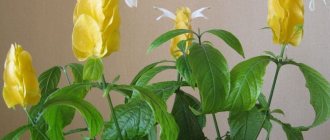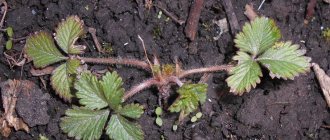Author: Elena N. https://floristics.info/ru/index.php?option=com_contact&view=contact&id=19 Category: Garden plants Published: November 09, 2017Last edits: November 04, 2020
- Growing conditions
- Tamarix tetrandra
Tamarix (lat. Tamarix), or tamarisk, or comb is a type genus of small trees and shrubs of the Tamarisk family, numbering more than 75 species. These plants are also known under the names “God’s tree”, “bisernik”, “comb”, “zhidovilnik”, “Astrakhan lilac” and “jengil”. The scientific name of the plant comes from the toponym of the Tama-riz River in the Pyrenees - now called Timbra. Representatives of the genus are found in semi-deserts and deserts, on salt marshes and solonetzes, as well as in the sand dunes of Africa, Asia and southern Europe. For example, 15 species of tamarix grow in the tugai forests of Central Asia; in the Caucasus, plants rise to a height of 600 m, and in the mountains of Central Asia - up to 2000 m above sea level. In culture, the tamarix shrub is grown as a sand-fixing and ornamental plant.
Planting and caring for tamarix
- Flowering: depending on the species, but usually in April-May.
- Planting: best in early spring, but possible during leaf fall.
- Lighting: bright light or partial shade.
- Soil: any well-drained soil.
- Watering: the first 2-3 weeks after planting - abundant and frequent. Mature plants require moisture only during periods of prolonged drought.
- Feeding: in early spring - with a solution of organic fertilizer, and in summer, foliar feeding is carried out with potassium-phosphorus fertilizer and solutions of microelements.
- Pruning: sanitary, thinning and rejuvenating - in early spring, before the start of sap flow, or after flowering.
- Reproduction: seeds and cuttings.
- Pests: practically not affected.
- Diseases: resistant, but may suffer from root rot due to excessive moisture.
Read more about growing tamarisk below.
Description of Tamarix
Native to Eastern Europe and some parts of Asia, Tamarix or Tamarisk (you can also find the name Comber, less commonly Bisernik) are deciduous shrubs or trees that grow up to 1–18 m in height, forming dense thickets with a deep root system. Tamarix tolerates heat, frosty winters, and drought well. It is one of the few plants that can survive in dry soil, which consists mainly of sea sand. The earliest mention of the Comb Man comes from Mesopotamia.
Smooth reddish-brown bark and small, deciduous, scale-like, grey-green leaves set this shrub apart from other garden tree crops. In autumn, the scaly leaves turn a warm orange hue, adding brightness to the garden area.
Flowers ranging in warm shades from pink to white (depending on the species) appear in dense masses on 5–10 cm long spikes at the ends of branches, sometimes completely covering the foliage.
Another interesting feature of these plants is that different species have different flowering seasons. Tamarix tetandra blooms in May and June, while the Tamarix ramosissima variety blooms from mid-summer to fall.
Botanical description
Tamarix are graceful deciduous or evergreen shrubs. Often among them there are bush-like trees with a height of 1.5 to 12 m with a trunk thickness of up to 50 cm. The crown of tamarix is formed by twig-like shoots, densely dotted with scale-like alternate miniature leaves of a bluish-green, emerald or dark green hue. Small pink or white tamarisk flowers form large racemes or panicles. Before the flowers open, the bud-covered plant looks as if it has been studded with beads. During the flowering period, tamarix attracts bees because it is an excellent honey plant. The fruit of Tamarix is a pentagonal-pyramidal multi-seeded capsule with small seeds.
The Tamarix plant is distinguished by drought resistance and extraordinary vitality. It adapts perfectly to the gas pollution of large cities, and planting and caring for tamarisk will not cause trouble even for a lazy gardener.
Tamarix shrub: description of species and varieties
The culture has a fairly large number of varieties (more than 75), and the palette of shades is large. It was first discovered in the wild near the river. Tamariz, which is located in the Pyrenees. Today in nature it can be found in India and Southern Europe.
Grebenchuk bush (tamarix)
The comb shrub, as it is also called, has miniature leaf plates of a bluish-green color. During flowering, all flowers are grouped into racemes, the color of the petals is white or pink.
Note! Until the buds open, the plant is as if decorated with beads.
Another characteristic feature of the species is that Tamarix is an excellent honey plant because its flowering attracts bees. The crop is unpretentious in care, it is drought-resistant, and quickly adapts to regions with unfavorable weather and environmental conditions. Even a novice agronomist can grow this unusual flowering plant in his garden.
Using tamarix in landscape design
Tamarix is divided into three main species, by crossing which a considerable number of different varieties have been developed.
- loose;
- branched;
- four-stamen.
Note! Due to its good winter hardiness, the shrub is actively grown in the Moscow region, and some varieties are grown in Siberia and the Urals.
Tamarix loose
Visually, the loose shrub resembles a tree with a spreading crown. Under favorable growing conditions, it reaches a height of 5 m. The bark has a bluish or greenish color. The leaves are characterized by an ovoid shape. The flower petals are pink in color and are grouped into lush clusters.
Flowering duration is about two months. Thanks to its excellent winter hardiness, the ornamental crop can be grown in regions with harsh climates.
Tamarix loose
Tamarix branched
Branched tamarix mainly grows on the banks of shallows, lakes and rivers. It is a compact shrub, the bark of which is bluish or green in color, and the leaves are narrow, awl-shaped. The flowers are pink in color; the flowering period is at least 3-4 months, starting in June.
Note! Due to its lush and long-lasting flowering, the crop is often used in landscape design.
The culture is unpretentious and can be grown on any type of soil. Wintering in the northern regions involves the organization of additional shelters.
Tamarix ramosissima
Tamarix tetrastamen
This variety of tamarisk is grown in the Moscow region, as well as Siberia and the Urals. In the wild, the plant grows in Crimea and some regions of Transcaucasia. It can still be found occasionally in the Republic of Belarus.
A characteristic feature of the culture is a lush, spreading crown, which is formed from a large number of arched shoots with red bark. The leaves have a rich green color and grow along the stem. Caring for the four-stamen shrub is easy, so it is often grown to decorate garden plots.
Tamarix Tetrandra
Planting tamarix in open ground
When to plant
Tamarix seedlings are planted in early spring or during leaf fall, but spring planting is preferable. Tamarisk needs well-drained soil, but the plant does not have any special requirements for its composition: it grows even in heavy clay, provided that peat and humus are added to the hole during planting. Tamarisk is also undemanding when it comes to lighting, but grows better in well-lit areas.
- Description of popular varieties of floribunda roses
When choosing a place for tamarisk, think carefully about everything, since its thin, long roots do not tolerate transplantation very well.
How to plant
A pit for tamarisk is dug 60x60x60 cm in size. A layer of drainage material (expanded clay, broken brick, pebbles or crushed stone) 20 cm thick is placed on its bottom, a layer of wood ash with humus is placed on top of the drainage, and then the hole is filled 2/3 with a fertile mixture earth, sand and peat in a ratio of 2:1:1.
The shoots of the seedling are cut off before planting, leaving no more than 3-5 cm from each, after which the seedling is lowered into the planting hole, its roots are straightened and the remaining space is filled with a mixture of the composition described above. The surface around the seedling is compacted and watered abundantly. After planting and watering, the neck should be at soil level.
Transplanting Tamarix after purchase into open ground
White and yellow chrysanthemums - description of types and varieties
When choosing a site for planting in open ground, it is important to take into account that all types and varieties of tamarisk do not tolerate stagnant moisture, therefore, it is desirable that the tree grows on a small hill, and the groundwater depth is more than 5 m. The plant likes moderate moisture and abundant light .
In order for tamarix to grow, develop correctly and delight with lush flowering, you need not only to properly care for it, but also at the very beginning to take a serious approach to the selection and preparation of planting material and, directly, planting. Step-by-step sequence on how to plant shrubs:
- In open ground, dig a hole the size of which will be 2 times the size of the earthen ball inside the pot.
- Pre-prepare the soil mixture by mixing the soil with humus and compost.
- Water the crop thoroughly while it is still in a decorative pot or any other container.
- Now you can remove the tamarix without any problems.
- Place a small amount of nutrient soil at the bottom of the hole.
- Carefully, distributing the root system, place the shrub in the hole.
- Cover with soil, compacting it carefully at the end.
Planting comb shrubs in open soil
Important! Next, flower growers strongly recommend forming a watering circle around the trunk and abundantly watering the young and still fragile shrub. At the end, the planting site must be mulched.
Caring for tamarisk in the garden
Growing conditions
For the first 2-3 weeks after planting, the tamarisk seedling should be protected from the sun and watered regularly. When leaves appear on the plant, the shading is removed and watering is done less frequently. To retain moisture in the soil for as long as possible, the plant’s trunk circle needs to be mulched with some organic material. Adult tamarix are watered only during prolonged drought, but if it rains in the summer, do not moisten the soil around the plant at all. After watering or rain, remove the weeds that appear in the tree trunk circle and lightly loosen the soil.
Tamarix is fed in early spring, at the beginning of the growing season, with organic matter, and in the summer it is treated on the leaves with potassium and phosphorus fertilizers.
The plant's winter hardiness allows it to be grown in areas with a fairly cool climate, so tamarix has long been not uncommon in the Moscow region or the Urals. However, if weather forecasters say that in winter the temperature can drop to -28 ºC, even the most cold-resistant plants need to be covered: the tamarisk trunk is wrapped in polymer film or thick fabric, and the root zone is insulated with spruce branches or a thick layer of sawdust.
- 5 tips on how to speed up the ripening of tomatoes on the bush
Trimming
Tamarisk care includes crown formation. The plant tolerates pruning easily. It is best to carry it out in early spring, before the buds begin to swell. Old tamarisk branches with short growths are cut into a ring, but within a month they will give rise to young shoots, and the crown of the bush will again turn into a lush hat. Rejuvenating pruning of tamarisk is done on a strong branch located as close as possible to the base of the bush. Make sure that the growth of tamarisk shoots does not weaken, as this will be followed by a reduction in the number and length of the inflorescences. When the growing season begins and the degree of frosting of branches and shoots becomes visible, prune them back to healthy wood.
You can also prune after the tamarix has finished blooming: to give the crown a well-groomed, neat appearance, remove all wilted inflorescences and very elongated shoots. By pruning, try to give the bush greater stability so that you do not have to tie the branches to supports.
The crown of tamarisk thickens easily, so it must be thinned out regularly, removing some of the branches.
Pests and diseases
Pests hardly bother tamarisk. There have been cases when they moved onto the bush from a neighboring plant, but in order to get rid of them, one treatment of the tamarisk with an insecticide solution is enough.
The situation is worse with fungal diseases: they easily infect the plant during the rainy season. Affected shoots and branches must be ruthlessly cut off, and the plant and the soil around it must be treated with a fungicide solution.
How to care for Tamarix in the garden
Further care is not burdensome for gardeners, but you need to know a few nuances.
Watering and fertilizing
Tamarisks are considered drought-resistant. Therefore, they should only be watered during longer dry and hot periods. You only need to moisturize in the early morning.
The comber is not picky about fertilizers. In the spring, it is advisable to mulch the tree trunk circle with organic matter and apply regular fertilizer suitable for shrubs once.
Tamarisk haircut
Pruning is an important aspect of shrub care because it grows well. Gardeners often need to control its growth to keep the plant compact. Tamarix tolerate molding very well. Prune flowering shrubs every 2 years after flowering. It is worth considering that Tamarix blooms on last year's shoots. You can thin out the bush by cutting off a few old branches at its base. By planting the plants in a row, you can form a living Tamarisk fence in the future by properly trimming the bushes.
If you want to make a Tamarisk tree, trim off all the extra branches near the ground, leaving the strongest and healthiest ones.
Is it possible to replant Grebenshchik
Unlike most garden crops, Tamarisk can be replanted painlessly, even if you have partially damaged the roots. This tree will forgive your mistakes.
Wintering Tamarisk
It should be noted right away that Tamarix is primarily a crop for more southern latitudes, but this tree is quite frost-resistant. Most species of Tamarix tolerate cold temperatures down to -28 ° C. However, it is advisable to play it safe and cover the plant for the winter. Young plants up to three years old are required to be covered. The roots are covered with spruce leaves, peat, fallen leaves or sawdust. The trunk can be wrapped in dense agrofabric. Even if the branches of a tree are frozen, they will recover by summer.
Reproduction of tamarix in the garden
Tamarisk is propagated by cuttings and seeds, but experts recommend not wasting time on experiments with generative propagation, since the vegetative method gives more reliable and faster results.
Cuttings are carried out in early spring: semi-lignified cuttings 7-10 cm long and 1 cm thick are cut from the shoots, their lower cut is dipped in a root-forming solution and planted at an angle in a box with a light substrate (garden soil and sand in equal parts). Place a transparent dome on top of the box or cover each cutting with a glass jar. You will know that rooting was successful when young leaves appear on the cuttings. Rooted cuttings are planted in open ground in May, but they must be covered for the winter. Next spring, the seedlings that have overwintered in the garden and become stronger can be planted in a permanent place.
- Goldenrod: properties, cultivation, types
To be safe, you can first hold the cuttings in water, and as soon as they form roots, the cuttings are planted in the ground and covered with jars.
If you nevertheless decide to grow tamarix from seeds, keep in mind that the seed material of this plant very quickly loses its viability, and in the middle zone the seeds rarely ripen at all. Sowing is carried out without preliminary stratification along the surface of the substrate. There is no need to plant the seeds. The container with the crops is placed on a tray with water. When the seedlings grow up and become stronger, they are planted in a school for growing. They must be covered for the winter. Tamarisk seedlings are transplanted to a permanent place after a year or two.
Reproduction of Tamarix
This plant can be propagated by two methods - seeds and cuttings. The seed method is quite complex and requires a lot of attention, and the similarity of the seeds is very quickly lost. Cuttings are very easy and effective.
Harvesting cuttings of the Grebennik is best done in late winter and early spring. Collect cuttings from green branches (that have not yet formed hardwood) that are 15 to 20 cm long.
Place the cuttings in a special potting mix for seedlings or in a jar of plain water. In three to four weeks the first roots will begin to sprout. At this point, the cuttings can be transplanted into separate containers for growing and forming a seedling.
Types and varieties
Of the more than 70 species of tamarisk, the most winter-hardy plants are most often grown in cultivation.
Tamarix tetrandra
grows in Crimea, Greece, Asia Minor and the southeast of European Russia. This is a large shrub from 5 to 10 m high with brownish-red arched branches. The leaves on the branches are emerald green, lanceolate or ovate-lanceolate, narrowed towards the base, with a beak-shaped pointed apex. Flowers from white to light pink are collected on side shoots in racemes. Flowering begins in April-May. The species is drought-resistant and durable (lives up to 75 years).
Tamarix laxa
grows wild in Mongolia, Northwestern China, Afghanistan, Northern Iran and the lower reaches of the Volga. It can be a large and branchy shrub or tree up to 5 m high with spreading bare branches, green or gray. The leaves of this species are erect, ovate or oval-rhombic, pointed towards the apex and narrowed towards the base. Pink flowers are collected in dense brushes, which in turn form apical panicles. Flowering of this species lasts about 2 months. It is frost-resistant, drought-resistant, unpretentious to the composition of the soil and tolerates salinity well.
Tamarix gracilis
grows naturally in Kazakhstan, China, Siberia, western Mongolia, Ukraine and the south of European Russia. The shrub reaches a height of 4 m, it has thick, tapering branches covered with brownish-chestnut or gray-green bark and light fawn spots of cork along the shoots and in the axils of the leaves. On green shoots, pointed leaves are arranged imbricately; on one-year-old branches the leaves are larger, fawn, lanceolate. Spring simple clusters of bright pink flowers reach a length of 5 cm. Summer flower clusters, collected in large paniculate inflorescences, are somewhat longer - 7 cm. Tamarix graceful is a beautifully flowering and frost-resistant shrub that is of interest to landscape designers.
Branched tamarix (Tamarix ramosissima)
or five-stamen tamarix (Tamarix pentandra) grows on pebble shallows, river banks, and on terraces of river valleys in China, Iran, the Balkans, Mongolia, Central Asia, Moldova and Ukraine. It is an upright growing shrub up to 2 m high with thin greenish or bluish branches and annual reddish shoots. Its leaves are narrow, awl-shaped, with curved ends. Pink flowers are collected in dense complex racemes up to 5 cm long. Flowering begins in June and ends in September. The species is distinguished by its unpretentiousness to the composition of the soil, easily adapts to urban conditions, quickly recovers after freezing, but requires shelter for the winter. The most popular varieties are:
- Pink Cascade is a plant characterized by abundant and lush flowering;
- Rubra is a variety with purple-red flowers;
- Summer Glow is a shrub with bright crimson inflorescences.
Common types of Tamarix with photos
There are about 60 species of the genus Tamarix, each with its own characteristics. We will describe the most popular types among gardeners.
Chinese Tamarix (Tamarix chinensis)
The shrub is native to China and Korea. In its homeland, it easily colonizes wet areas with saline soils. It can grow as a tree with a single trunk or as a bush with several branches, reaching a maximum height of 6 meters or more.
The bark is reddish, brown or black. Small, branched branches are covered with small scale-like leaves, the length of which does not exceed 3 mm. The inflorescence is dense, several centimeters long. Each fragrant flower has five petals, which are usually pink but range from white to red.
Tamarix tetrandra
A large bush growing into a small tree with drooping branches 4-5 m in height. Representative of South-Eastern Europe and Western Asia. The almost black bark of the trunk becomes slightly corrugated at a later age. The branches are shiny, dark reddish brown. The scaly, narrow, oval leaves are bright green.
The leaves on young branches are oval, 0.5 cm wide, on older branches they are much smaller, approx. 0.1 cm. Small pale pink flowers grow in dense clusters, 4-6 cm long. Flowering period April-June. This Tamarix is great for coastal areas.
Tamarix graceful or Slender comber (Tamarix gracilis)
This species is listed in the Red Books of Russia and Ukraine. It is a bush 1 to 3 m high with thick branches covered with brownish-brown bark.
The leaves are oval-shaped, pointed at the ends and have a bluish-green color. The bush is considered frost-resistant and is successfully used in landscape design.
Tamarix branched or T. five-stamen (Tamarix ramosissima syn.Tamarix pentandra)
This species is a shrub or small tree with reddish branches curved to the ground and graceful feathers of pink flowers on the shoots.
Blooming in late summer, the flowers are so profuse that they transform the bush into a feathery pink mass. Flowers last for 4-6 weeks. The finely textured foliage is similar to juniper with tiny, narrow blue-green leaves. It usually grows 3-4.5 m high and 2.4-3.9 m wide.
The article uses materials from the site wiki.bugwood.org
Tamarix in landscape design
Tamarisks are used in landscaping for group compositions, trimmed hedges and as tapeworms, for example, as a blooming “fountain” in the center of a green lawn. Low bushes and tamarisk trees go well with conifers - junipers, thujas, dwarf spruces. Tamarix harmonizes with barberry, lilac and jasmine.
Some evergreen species of the genus can even be grown indoors. Tamarisks are used in forest plantations, on saline soils, in semi-deserts and deserts, and to stabilize sliding banks and shifting sands.
Tamarix care
The comb bush is a tenacious and undemanding plant. It is light- and heat-loving, so if possible it is recommended to plant it in sunny areas. In shade and partial shade conditions, growth slows down significantly, and under unfavorable conditions it may even die.
Calathea flower - description of Medallion and Crocata species
The shrub also does not tolerate wet and heavy soil types. The most suitable time for planting is spring. Excessively dense layers of earth are dug up with the addition of sand and peat. Soil with high acidity is treated with lime.
Note! After planting, from the first days the crop needs to be watered abundantly. Tamarix does not need constant care; excessive care can even cause harm. After the crop has taken root in a new location, the frequency of watering is reduced.
The culture is also undemanding to the ambient temperature. Burns do not appear in direct sunlight, and severe frosts are also not terrible (down to −28 ° C). But an increased level of humidity can cause great harm, as the likelihood of developing fungal diseases increases.
Covering the comb shrub for the winter
If the crop grows on fertile soils, then fertilizing is applied no more than once in the spring. It is recommended to use a mixture of ash with chicken droppings or mullein.
Planting and caring for tamarisk shrubs have no specific requirements or features. Not only an experienced gardener, but also a beginner can grow it. It is recommended to purchase high-quality planting material from special nurseries or from friends.











